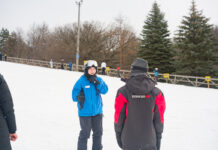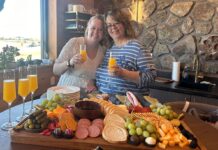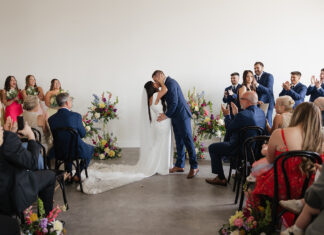Image of Dwight Edstrom (above) taken by Toby Brusseau and featured in "I Am South Dakota." To see more of Edstrom's visual tale, click here. Image in teaser by Ryan Soderlin.
Absence makes the heart grow fonder. The nauseating old adage would be downright infuriating if it were not true. It’s funny how one often needs distance to appreciate what has been in front of them all along. Photographer Toby Brusseau found this to be the case for himself and South Dakota’s Black Hills. “I think it’s not until you leave a place that you can really see how special it is, and I’d been gone for a while,” said Brusseau.
After attending college in Montana and traveling the world, he came to realize that the people in his home state were every bit as interesting and astonishing as those inhabiting the rest of the planet. Discovering his latent muse has resulted in Brusseau’s first book of photography, "I Am South Dakota."
“It’s very beautiful here, and I’m not trying to contest that. We’ve all seen the books and pictures. It’s an amazing place; it’s a magical place, but what makes a place is its people. When I came to that realization, I decided I wanted to make a book about the people of South Dakota—like a really intimate look inside people’s lives for others to see…and hopefully they’ll take a part of that home with them. You always hear people say that South Dakota has some of the best people, and they’re so genuine and they have all these good traits and qualities. I wanted to show that in the book.”
Brusseau relied heavily on word of mouth to find his subjects for IASD. While inquiring about Jeff Schlukebier (a man who lives off the power grid) at a Hills, S.D. sporting goods store, he also got a lead on Brian Jansen (a wildlife researcher who works with mountain lions, pictured). It went on like that for most of the project. Amongst the 10 South Dakotans profiled is a demolition derby driver, a beekeeper and a funeral director (pictured). However, there were many individuals he could not include, even though they live fascinating lives. According to Brusseau, “Someone would say, ‘I have a great person,’ and they might have had great stories, but it’s not easy to photograph, say, a lawyer or someone who has a desk job. Some people aren’t easy to photograph and get 10 to 12 photos out of them. I kind of chose these different professions, and they just worked out.”
What attracted Brusseau most to the subjects that he chose and what links them together is that they each face their lives head-on, each taking full responsibility for their actions, living unapologetically. The focus of IASD is what many would deem the extraordinary aspects of ordinary lives— as they truly appear.
Brusseau said, “It’s funny because these people have really interesting lives, and then you tell them what you’re doing and they look at you like you’re crazy and say, ‘I’m not interesting.’ I say, ‘Well, you live your life every day. Of course you’d say that.’ It’s like a fighter pilot would say ‘I do this every day,’ and the average person would say, ‘What? Are you crazy?’”
Because of his commitment to conveying his subjects as naturally as possible, he used little flash photography. In fact, a flash was only used for the portraits of those profiled in IASD. Brusseau wants the viewer to feel like they are right there with these people, looking at them through the window, experiencing their lives right along with them. The original batch of photos – all 10,000 or so – were shot at various times of day, in every weather scenario. He made at least 20 trips to photograph each subject, covering thousands of miles and resulting in relationships comfortable enough for guards to be dropped and real life to shine through. Many of these excursions yielded nothing usable, but in the end, Brusseau ended up with about 10 images each that best showcase a deep slice of that particular South Dakotan’s life.
Brusseau found the opportunity to establish a bond with his subjects refreshing after his experiences in the more expedited field of photojournalism. “You’d go out on assignment and you’d have an hour, or maybe even less than that, to take a photograph of someone, and you’d really only see what they wanted you to see, because they knew that you were there. They’d be like, ‘I don’t want them to see the bad stuff in my life.’ This was a way to get to know them better, to go out there repeatedly and establish a relationship so they’d let down their guard, and I could capture those moments that normally you wouldn’t get to see.”
To read the entire article, pick up the December issue of 605 Magazine today!




















